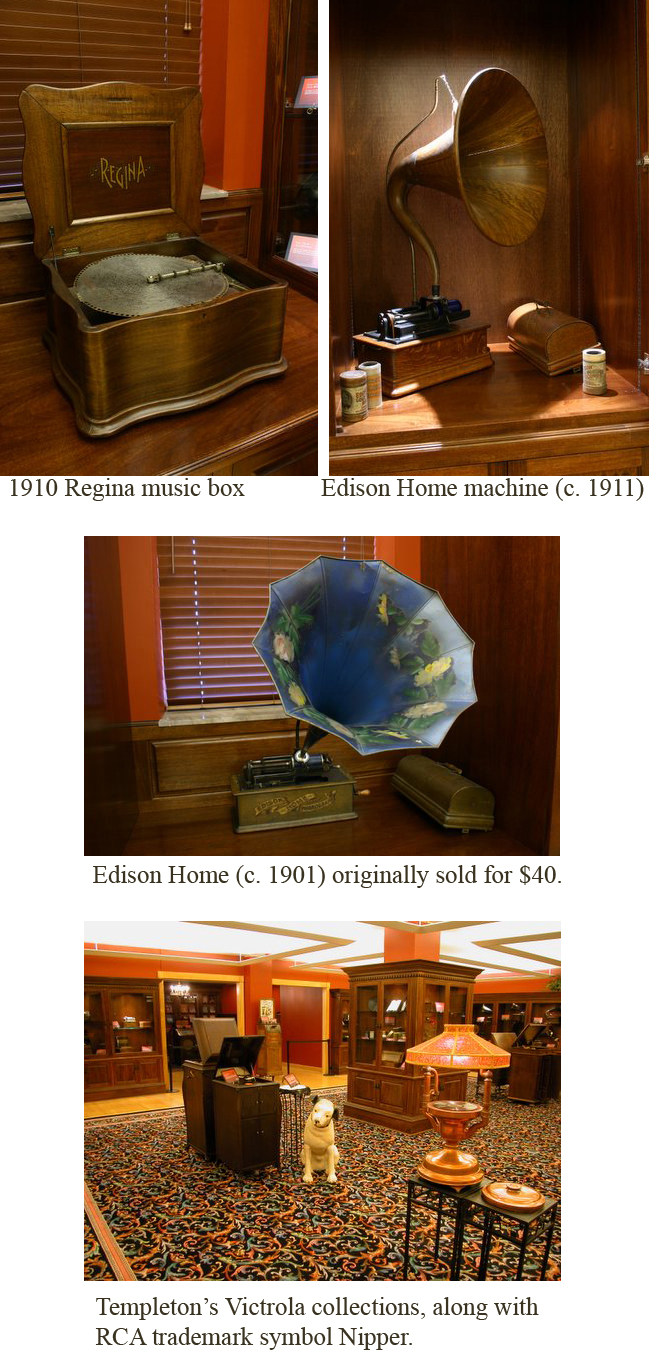Contact: Maridith Geuder

Photo by: Alston Avritt and Jim Tomlinson
STARKVILLE, Miss.--Providing both an auditory and visual journey over more than a century of American culture, a recently opened Mississippi State archive traces musical eras from ragtime staples through the show tunes of Irving Berlin.
Located on the fourth floor of the university's Mitchell Memorial Library, the Charles H. Templeton Sr. Music Museum invites visitors with both tuned and tin ears to explore the cultural, historical and business aspects of music. The focus: its transition from traditional 19th century styles to a popular commercial medium.
A gift from Mary Ann Templeton of Starkville, Charles Templeton's widow, made possible the extensive renovation of former meeting rooms into a modern, visitor-friendly suite that joins the John Grisham Room as a library point-of-destination.
"This collection has proven to be of interest to scholars around the world," said Dean of Libraries Frances N. Coleman. "We have no doubt the opening of this newest library resource will introduce even more patrons to a remarkable cultural history."
Charles Templeton amassed the collection from the 1950s until his death in 2000. It includes more than 22,000 pieces of sheet music, 15,000 recordings and nearly 200 instruments ranging from Thomas Edison's early model phonographs to a vintage Link player piano.
Taken as a whole, the collection illustrates what Templeton described as "the business of music"--the popularization and mass production of music for commercial distribution.
A successful Starkville businessman with a highly inquisitive mind, he sought to answer such questions as "Why was the Victrola more popular than the Edison instruments?" Beginning with a horn record player purchased for his wife, he steadily added to his holdings--and his musical knowledge--over the decades.
Donated to Mississippi State in 1987, "Business of Music" originally was housed in a former campus residence on Blackjack Road. The rare instruments and other cultural artifacts subsequently were moved to the library for proper curatorial attention by the professional staff.
Even as the collection now is being brought physically closer to interested patrons, the library continues the digitization of Templeton's entire sheet music collection for scholars and music lovers worldwide. To date, more than 2,000 of the pieces are Internet-available at http://library.msstate.edu/content/templates/?a=1030.
Some other museum artifacts include:
--Flat disc recordings dating from 1897 that represent a complete history of this audio-reproductive type;
--Thomas Edison "cylinder" recordings, including a very rare long-playing disc;
--Early Edison phonograph models;
--A life-sized model of "Nipper," the distinctive black-and-white dog featured on RCA products, and other advertising memorabilia;
--A 1904 New Century Disc Box, one of only about a half-dozen remaining in the United States;
--A rare recording of Italian operatic tenor Enrico Caruso (1873-1921); and
--A 1910 Aeolian Orchestrelle player organ.
"This amazing collection gives 'voice' to a rare collector and provides a rare glimpse into America's past," Coleman observed.
The Templeton Museum is open Monday-Friday, 9 a.m.-4 p.m. For more information, visit http://library.msstate.edu/templeton.